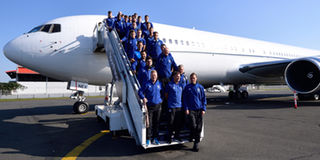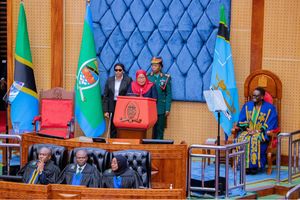OPINION: The media and slanted Everton narrative

What you need to know:
Journalists who gave Gor Mahia a blackout should understand that giving the club its due does not take away the rich history of Simba and Yanga
The match lasted a little over 90 minutes, but the visit of English Premier League (EPL) side Everton (#EvertoninTanzania) has also brought home some food for thought.
In journalism parlance, who, what, where, why and how are the cardinal rule of reporting. Every rookie reporter ought to know that. However, during Everton’s visit, there was a lot of “where”, some amount of “who” and “what” and very little of “why”.
It is true that by finishing seventh in the EPL last season Everton earned 132.4 million pounds, which is enough to massively transform Tanzanian youth football at Sh1O billion a year for several years. That may explain why the opponents of the English side were a mere footnote, thus leaving readers, viewers and listeners wondering exactly why Everton were in Tanzania. In other words, who and why were only partially answered in the numerous reports as overzealous journalists fawned over Wayne Rooney and teammates.
Commentator Amos Msanjila, writing on social media a day after the match, wondered why Everton were not playing a Tanzanian team in the first place. The gap here was the fact that the local media never bothered to research Gor Mahia and put events in perspective.
As tournaments go there were rules and in this, Tanzanian participants, including giants Simba SC and Yanga, signed up knowing that the winners would earn a ticket to meet Everton. To cut a long story short, local clubs did not take the tournament seriously and lost to Kenyan teams at the semifinal stage and the rest is history.
The media then became the stage for clamour that Everton be made to face either of the two as a sign of loyalty to the nation. Simba and Yanga have the mettle and could have done better, but chose to belittle the tourney.
The UK’s Daily Mail also failed to educate its audience on football in general in the region, the leagues, the Kenyan champions and their history and the potential of the Tanzanian league and its players. Facts missing from this narrative included the fact that Gor Mahia was not meeting an English League side for the first time, but the fifth, having also faced West Bromich Albion and Norwich City in the 1960s and 70s.
Here I quote Roy Gachuhi, a seasoned sports writer. “In 1968, English FA Cup champions West Bromwich Albion became the first English top League team to make a tour of Kenya and play local sides, including Gor Mahia. They were here after hearing good stories about us from their kinsmen.
“In 1975, the famous tour by Norwich City, which former KFF Chairman Kenneth Matiba touted as his definitive fight against witchcraft in Kenya football, took place. In that tour Norwich, featuring World Cup star Martin Peters and fellow England caps Collin Sullivan and Phil Boyer, thrashed Gor Mahia 4-1, Abaluhya 6-1 and Mombasa’s Champion 8-0.
“Finally, on May 28, 1976, Notts County arrived in Nairobi for a four-match tour. It was to be that last in a memorable stretch lasting almost two decades. By this time, we were coming of age and Mwenge (again!), under the leadership of goalkeeper Mahmoud Abbas, beat the guests 2-1. Kenya Breweries went one better and beat the Magpies 2-0. But the giants, Abaluhya and Gor Mahia, fell – the big cats 0-2 and K’Ogalo 0-1.”
Congratulations to Gor Mahia, the Kenyan Premier League champions (and the only football club in East Africa to have won a continental title) for making a good account of yourselves against big-money opponents and Sportpesa for making it happen for the good of African football.
The journalists who did all they could to give Gor Mahia a blackout in Tanzania should understand that giving Gor Mahia its due does not take away the rich history of Simba and Yanga.
You will inspire your audiences with your ability to remain professional, independent and value facts, not the other way round.




